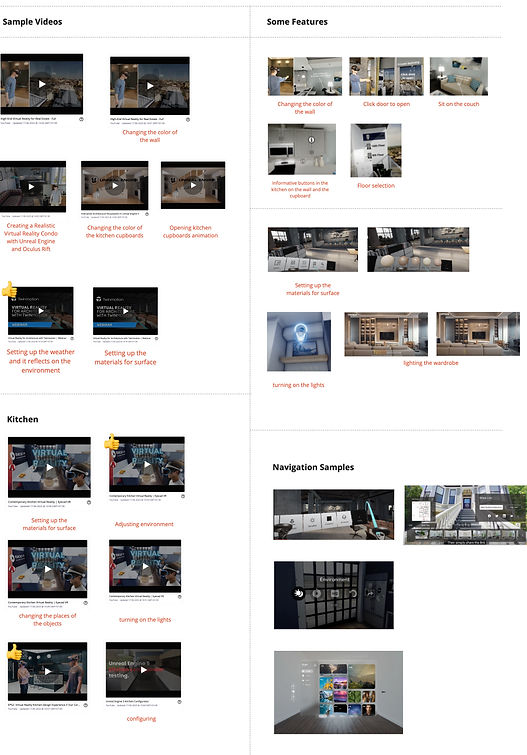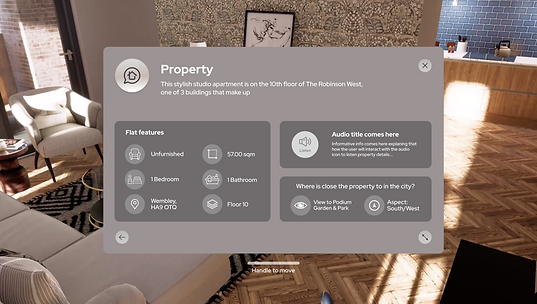Designing the Future

Real Estate VR
Company: Born The Immersive Transformation Company
Client: Bulgari Homes
Year: 2023
Role: Lead UX Designer
Status: Concept, POV
Responsibilities:
-
Creation of the comprehensive UX design workflow
-
Governance of the design principles.
-
UX Research
-
Ideation, wireframing, special effects and haptic design creation
-
Production and Delivery
Overview
The goal of this project was to develop a cutting-edge VR experience for the real estate market. This application would enable users to virtually tour properties, providing an immersive and realistic experience that helps them make informed decisions.
The design balanced sophistication with approachability, ensuring it appeals to high-end and mid-market users.
Challenge
Many users may be experiencing VR for the first time, making it crucial to design navigation that feels natural and intuitive.
With VR sessions limited to 10-15 minutes, we had to present content efficiently to keep it engaging and informative.
High-fidelity, realistic environments are essential in real estate to give users an accurate sense of the property. However, this can strain performance and lead to lag or motion sickness.
Users need get a true sense of space and scale within the virtual property.
Research

App's Features
We aimed for a design that is sophisticated, easy to use, and enjoyable. We identified and prioritized essential features by analysing current competitors and distinguishing between must-haves and nice-to-haves.


Summary
-
We used a clean, modern design with high-end visuals, balanced with approachable colour schemes and user-friendly interfaces to cater to a broad audience.
-
We implemented a simple point-and-click navigation system, complemented by visual and audio cues, to guide users seamlessly through the virtual environment.
-
Using common gestures and familiar UI elements, we designed interactions to be straightforward and behaviorally recognizable. Tooltips were included to ease the learning curve.
-
We added interactive hotspots and informational pop-ups to keep the experience dynamic and engaging. Users could explore property details, amenities, and local neighbourhood information at their own pace.
UX Flow and User Placement
The UX flow needed to integrate interactions, audio, and haptic feedback simultaneously, allowing developers to understand the relationships between these components. The UX flow system effectively presented all elements clearly and cohesively.


User Placement
I ensured that user placement was correct and accessible for everyone. To better visualise the user journey through each room, I created a map highlighting how much space users have for their comfort, including teleportation marks. I considered claustrophobia, motion sickness, and other accessibility features to enhance the overall experience.
Design Style

Home
In the meantime, while searching for the right design style to meet the brief criteria, I explored a few variations and ultimately chose a soft and minimalistic approach. UI designer then created a version that meets our design style criteria.

Radial Menu
I introduced the radial menu for quicker access to the app’s features, as radial menus are user-friendly and easy to navigate.

Property
The property panel was crucial as it displayed a summary of the property’s features. It had to be minimalistic, yet informative and easy to understand.

Map
One of the most favourite features was the map and navigation point, which allowed users to see their current location and orientation.
Design System
Based on the UX specifications, the UI team was able to create a comprehensive design system. I directed the development of this system and ensured the inclusion of accessibility components.

Check the video below

